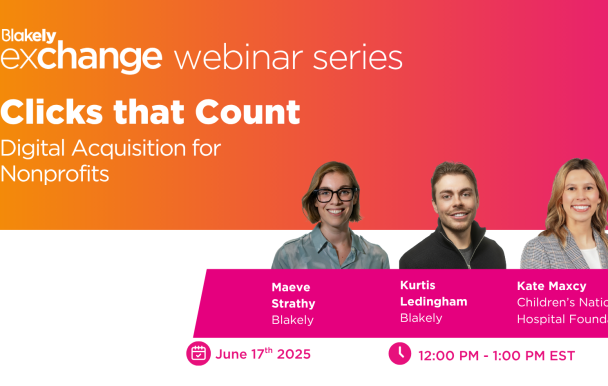
Donor Experience: A Journey, Not A Destination
Charities are consistently asking themselves what donors need in order to keep connected, and giving, and doing more for the causes they care about. We believe asking the right questions is key to building a deeper understanding of what donors need. Questions like:
- What do our core group of donors need from their experience?
- Which groups of donors need a slightly different experience?
- How are our donors tracking against our validated, non-financial KPIs for donor experience that we know result in lifetime value?
- Are there new groups of donors emerging with new needs that we should be planning for?
One of the ways in which we answer these questions with our clients is through our Affinity Survey work. This comes in many shapes and sizes depending on the objectives. There are a number of options for our affinity work, and all of them deliver an amazing number of insights! Over the last four years, we have identified several key trends across multiple programs and donor groups, which is really helping us to build more effective donor experience touchpoints.
New donors during the pandemic skewed younger than ever before
This is important because we already know that donors under the age of 55 are different from older donors. How they want to receive information is different, what they care about is different, and they have a much higher appetite for supporting in different ways. As these new donors filter into our donor base, they are going to diversify the kind of experience that we need to deliver.
New donors are coming into our organizations with assumed trust – but this often drops after the first year of support.
The case for welcome/onboarding journeys has never been stronger. In many surveys, we’ve looked at both new donors and existing donors, and surprisingly, new donors have tracked more positively up against our donor needs (Motivation, Impact, Need, Values, Trust) than existing donors. We’ve also seen that a new donor is more open to supporting in other ways, so the welcome journey is a prime time to diversify their support – which we know leads to longer tenures and higher lifetime values. We’ve also seen loyal donor files that seem to be just going through the motions so we’re thinking a lot about re-onboarding and specific experiences for loyal donors to show them some love.
All donors – yes, all donors– want shorter content included in their journey.
No, we’re not saying replace letters with emails, but we have found that in every survey we’ve completed to date, without exception, donors want shorter blasts of information. Even the higher value and legacy donors. Our attention span is quickly decreasing and so the need to get our message across simply, quickly and in a focused way, has never been more vital.
Impact and donation achievement are not the same thing.
…but both are crucial for retention. Charity impact (what the charity is achieving) gives us confidence and trust that they are capable of doing what they say they are going to do. My donation achievement is a different thing entirely – what has MY contribution done? And there are different ways of approaching this – by value, by specific campaign, by tenure – all can be used to show how MY contribution has made a difference.
Donors who are informed have a higher level of knowledge of donation achievement and an increased lifetime value.
We have found that donors who feel more informed about the charity also say that they feel they know what their donation achievement is. And while a lot of donors in this category have a longer tenure, we’re also seeing newer donors – who have been properly onboarded and communicated with – display good levels of knowledge. The key is to strategically plan how – and most importantly what – donors need to know.
Throwing everything at donors can be overwhelming and be as effective as not telling them anything at all. A clear proposition that is expressed in great creative and well-planned content is the key to making donors feel informed.
Ultimately, the experience comes down to more than being thanked properly or getting ‘wow’ moments (although both of these are important!). It’s about clear, concise, and focused content, based on a clear and simple organizational proposition, delivered in an effective way.
When we think about the experience in this way, we can clearly see that the experience doesn’t start with the first donation, but from the point of connection or acquisition. Bringing this insight into our design of donor experience will ultimately move our engagement in the right direction as we embark on new strategies in 2023.
Check out our latest case study on how we used Affinity Surveys to inform Heart & Stroke’s mid-level giving product development.
Want to have a conversation about your donor experience? We love talking about this subject so feel free to reach out for a chat!









